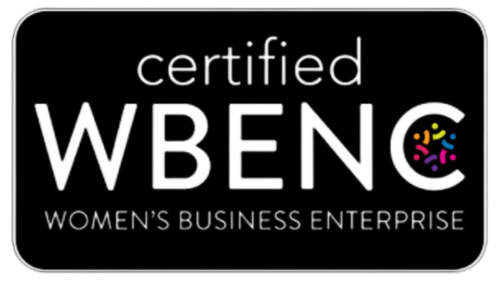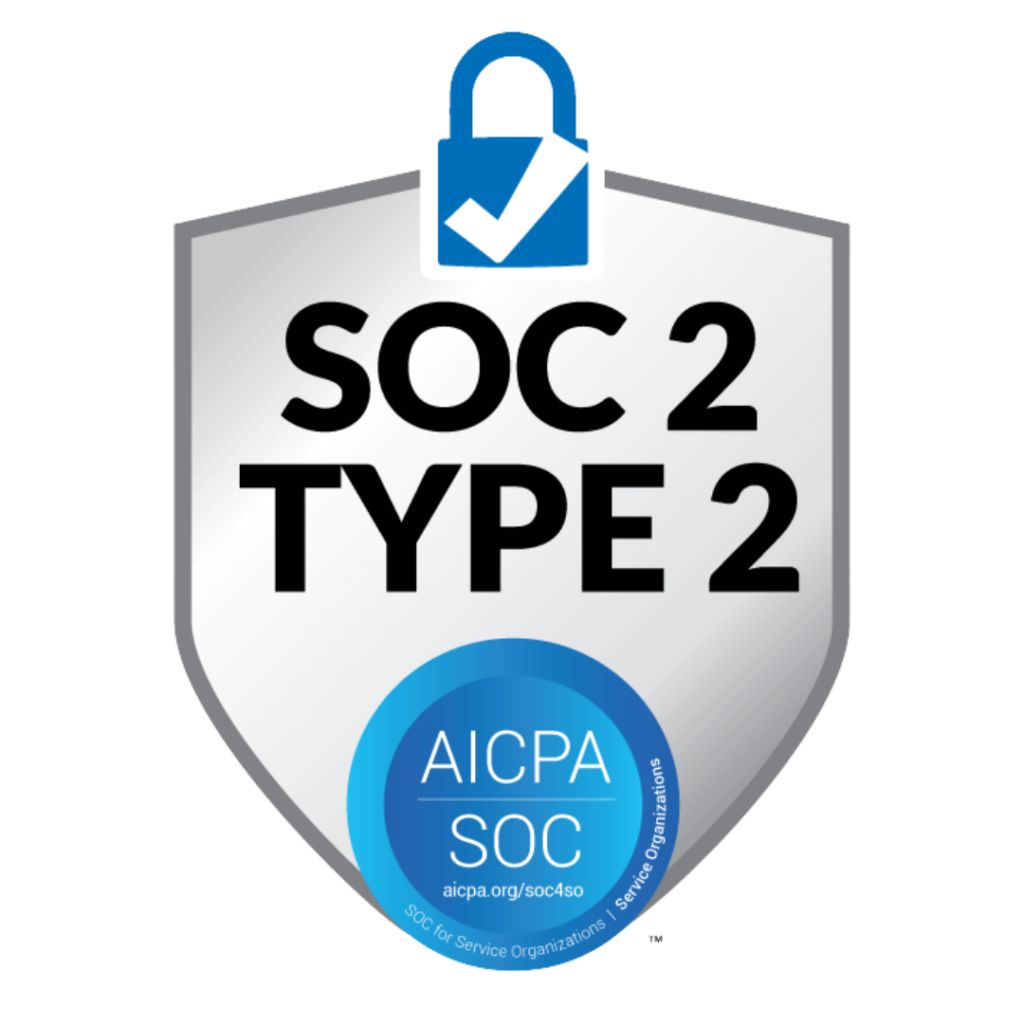By Jim Caliendo, President & CEO, PWCampbell
With the recent implications of COVID still lurking in the shadows, many branches are facing quite the conundrum – Do we spend money to upgrade outdated branches? If so, how much can we spend? Or, do we hold off on the spend altogether and hope it does not affect our ability to remain competitive? On one hand, investing in the branch can be a little unsettling as it means allocating money to an asset when times are tough, business may be slow, and money may not be readily available; but on the other hand, you’ve walked the lobby of your outdated branch enough times to find the 20 year old coffee stain on your plaid carpet floor in your sleep.
Renovating a branch can be a daunting task for many reasons. Of course, everyone is aware of the financial impact on financial sheets, but a major overhaul could also have implications on branch operations and your ability to service your customers. Renovating your branch is still the best option in the long run, however it is a costly one at that. And truth be told, reimagining your branch can get messy turning your experience centers into hardhat areas and construction zones – and let’s be honest; no one is in a position right now to remain closed any longer than they have to be.
But another viable option exists. The good news is branches do not need to undergo a major overhaul or be built from the ground up, and banks do not always need to invest millions of dollars to improve their assets. Walls do not always need to be torn down; buildings often do not need to be gutted. Many times, just a much-needed facelift is all the branch requires to pull it out of the depths of the 1970’s, and make it current, relevant, and sometimes even ahead of its competitive set.
Soup to Nuts Broken Down
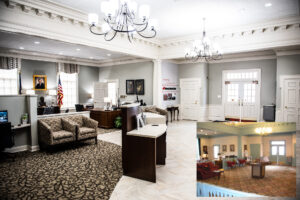 Not every bank has the resources to build a Capital One Café, or completely overhaul every branch within their network soup to nuts. Nor do they want to. But every Bank needs to ensure their branch network conveys the right messaging to its consumers and creates the appropriate culture for their employees. If you have a color scheme from the 1970’s, stained or worn out carpet, or outdated wall coverings, what is that saying to your customers? What about your teller line – is it old-fashioned? Is it inappropriately scaled to address the needs of the modern-day consumer? The last message you want to send to your customers is that you don’t care about them, don’t want to spend the resources to meet their dynamic needs, and don’t have a viable business operating plan to keep you competitive. So how does a branch reinvent themselves without a complete overhaul? By implementing a Three-R approach.
Not every bank has the resources to build a Capital One Café, or completely overhaul every branch within their network soup to nuts. Nor do they want to. But every Bank needs to ensure their branch network conveys the right messaging to its consumers and creates the appropriate culture for their employees. If you have a color scheme from the 1970’s, stained or worn out carpet, or outdated wall coverings, what is that saying to your customers? What about your teller line – is it old-fashioned? Is it inappropriately scaled to address the needs of the modern-day consumer? The last message you want to send to your customers is that you don’t care about them, don’t want to spend the resources to meet their dynamic needs, and don’t have a viable business operating plan to keep you competitive. So how does a branch reinvent themselves without a complete overhaul? By implementing a Three-R approach.
The Three-R Approach
The Three-Rs are not uncommon when it comes to promoting meaningful concepts in our society. We have heard it with the push to go green with reduce, reuse, and recycle; we were even taught about it in school with reading, writing, and arithmetic. Now, the Three-Rs are changing the banking industry, proving as a quick and easy cost-effective solution to reimagining your branch. Believe it or not, this process can completely transform your branch in as little as 3-4 weeks, with incredibly low costs and minimal impact to your operation.
STEP ONE: RENEW
When breaking down a branch reimagination, the most sensible application with minimal amount of impact to your operation involves a “renewal” of your space. This soft renovation primarily consists of cosmetic changes affecting paint, carpet, floors, and walls. Often, just a repaint from a more modern color palette can instantly transform a branch and bring it into the current era. In addition, incorporating new flooring or replacing worn carpet can really transform and enhance retail space, providing a mix of traffic flow, transitional areas, and contemporary influences. Wall coverings finish out the space, adding a multi-textural contrast against paint and floor to really make your once-outdated branch a dynamic design experience. With much of the work being done after hours, it lends minimal impact to your operation, with maximum returns in the eyes of your customers and employees.
STEP TWO: REDESIGN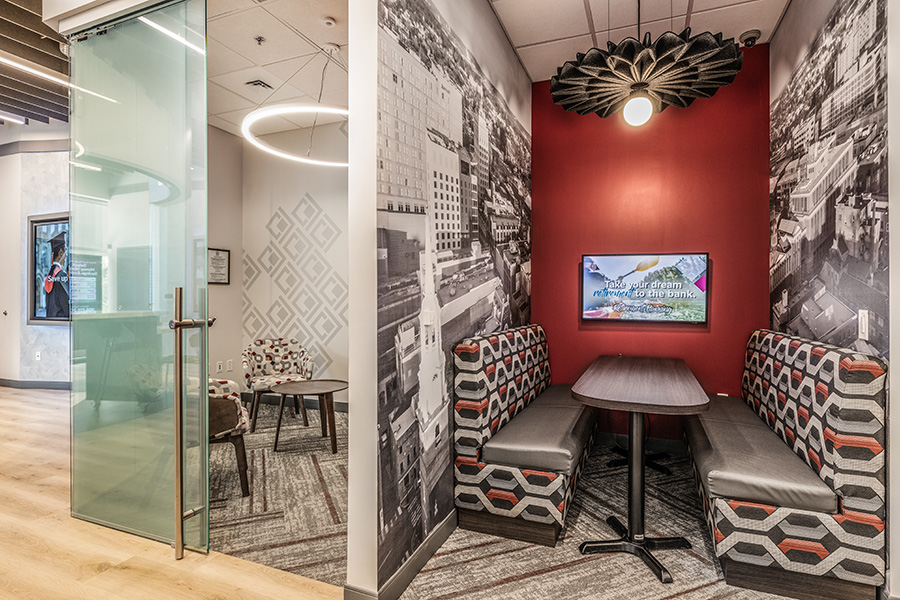
You now have a beautifully renewed branch with textured wall coverings and modern flooring, but there is a stark contrast between this design-forward experience center and your teller line circa 1976. This is where the Redesign phase comes into play. During the Redesign, look at your case-goods, teller line, and millwork. The advantage here is that you can seamlessly integrate all of the above at the blink of an eye. How is this possible? For one thing, all build outs of case-goods and teller lines are normally done offsite, then shipped to the property to install. This means that while your branch is grinding out transactions, counseling customers, and opening accounts, there is an offsite team of workers building out your new look and feel without a hint of inconvenience to you, your staff, or your customers. Once completed, these elements are then shipped to the site and installed in as little as a weekend, leaving you to walk in fresh Monday morning to a brand-new branch.
STEP THREE: REIMAGINE
With Renew and Redesign completed, your branch looks modern, updated, and relevant. It is warm and engaging. You could spend hours ogling over the brand-new floors and updated merchandising, but something is missing. The walls while newly painted, look a little bare; the lobby while recently refreshed, is void of impactful marketing, branded messaging, and relevant technology.
Branding and technology are the final pieces to the puzzle, pulling everything together and creating an interactive experience that your consumers will crave. They are often times the most affordable enhancement as well. With branded elements, you can further drive home your messaging throughout the branch, thus leaving a lasting impression. With branded elements in the form of decals, branded walls, on-brand signage, and more, your beautiful new space can really transform into an experience representative of your brand. The addition of relevant technology within the space not only updates the look and feel of the branch, but also provides a convenience that is now expected from generations of all ages. This technology can further drive branded messaging, provide educational information, and deliver upsell and cross-sell opportunities.
For example, digital signage drives a message retention rate of 83%, double that of traditional marketing methods. This means all those promotions that your marketing team is spending time and money on will not only have an increased chance of getting noticed, but also has a much greater chance of being remembered and ultimately acted upon. iPad integration also provides a means of familiarity to modern-day consumers, boosting engagement at the branch level and increasing education and retail transactions. Lastly, the addition of conference room technology allows you to finally connect to your consumers virtually, which has become imperative in the COVID-19 marketplace.
At the end of the day, the Three R Model can leave you with a brand-new looking branch with leading edge features that send a message to your customers that you are willing to invest your resources to remain relevant and competitive.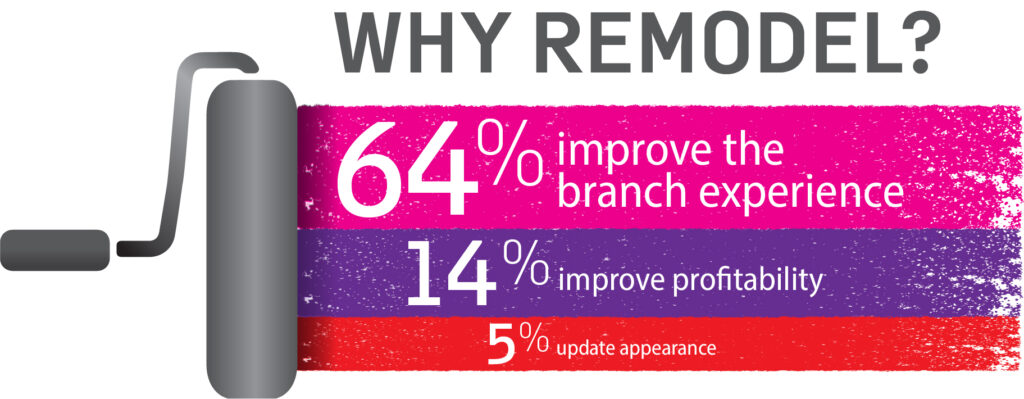
The cost savings obtained using this model to reimagine your retail space levels the playing field a bit; allowing institutions with greater limitations the ability to transform their branches with similar outcomes as their much larger competitors in as little as three-to-four weeks.
It is time to say goodbye to the coffee stain. Your consumers are craving it, your employees are needing it, but most of all, you and your branch deserve it.
James G. Caliendo is a former bank executive and now President and CEO at the 112 year old design/build and retail services firm. In the past 20 years alone, under Jim’s direction, PWCampbell has worked with over 500 financial institutions influencing millions of square feet of retail and operational space to create engaging, impactful and scalable solutions for every sized facility project.
